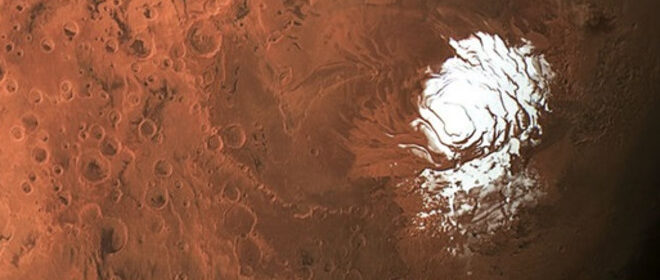Water Ice Below Mars Surface

Scientists have found there are mass quantities of clean water ice below Mars surface. They don’t know the properties of this water ice, like how pure it is, how deep it goes, and what type of shape it’s in. In order to mine for drinking water, farming crops, or be able to convert it to hydrogen for fuel they will need to analyze this for future settlers. The Mars lander robots can drill into the surface to give the scientists the information that they will need, but only about 10 meters down. Luckily the land erodes so that the areas searched at one time may now have eroded away enough of the surface to be able to get better information. Scientists have found a few of these areas with the help of HiRise, a powerful camera aboard one of NASA’s orbiters.
USGS planetary researchers have noted that the camera has located about 8 sites. The sites have a large amount of ice at the surface and as deep as 100 meters. They don’t want to say the quantity of the ice that is present or the purity, but it is looking very good. Since a large amount of ice is close to the surface it will not take as much energy to extract and use. Researchers believe that the clean water ice below Mars surface has formed during some snow developing over millions of years. Some of the ice is clear and some has a lot debris that may have come from different snow events.
The spectrometer readings are showing that the ice on the planet is pretty much clear of debris. Some of the ice is made up of ice-cemented soil which would be difficult to convert into a water resource.
Research shows that these locations of water ice are located about 55 to 60° north or south of the equator where the temperatures can become very low. When they do start having Mars landings they are going to be landing by the equator where the temperatures can be about the same as the temperatures in Hawaii. The only problem with these landing sites is that the warmer the temperature the harder it is to find the water ice sources.
Scientists believe that humans may be able to travel to Mars in the year 2030.

 Print
Print